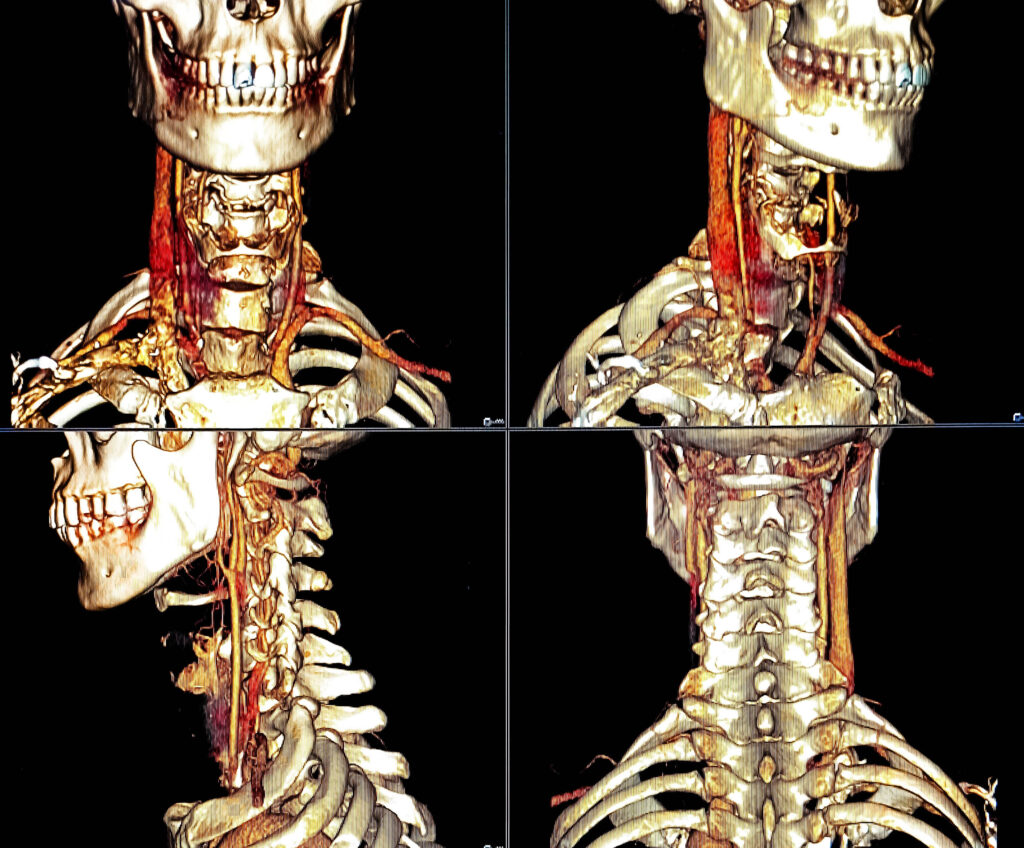
Suggestive of Neck Ct scan seen right side problem. 3D reconstruction of neck ct contrast media.
PROVIDENCE, R.I. – A startling rise in a lesser-known cause of strokes has been identified, pointing to cervical artery dissection as a growing threat. A new nationwide study reveals that hospital stays associated with this type of stroke have surged by 400% from 2005 to 2019. This alarming trend was uncovered by a team led by Dr. Shadi Yaghi, a vascular neurologist at Brown University, who meticulously analyzed 125,102 records.
Immediate Impact of Cervical Artery Dissection
Traditionally, strokes have been attributed to clots from the heart or fatty build-up in the carotid arteries. However, cervical artery dissection, a condition where the inner lining of a neck artery splits, allowing blood to create a flap that can obstruct flow or cause a clot, is now recognized as a significant contributor.
Key Details Emerge
Cervical artery dissection is particularly concerning for adults under fifty, accounting for up to one in four strokes in this age group. The condition often follows physical trauma such as car accidents, sports injuries, or even minor incidents like awkward movements.
400% increase in hospital stays related to cervical artery dissection strokes between 2005 and 2019.
By the Numbers
Incidence rates have climbed from 11 to 46 cases per million people over 15 years, marking an average annual increase of 10%. The rise is most pronounced among Hispanic and Black Americans, nearly doubling the increase observed in white patients. This suggests disparities in trauma exposure and access to vascular care.
46 cases per million people in 2019, up from 11 cases per million in 2005.
Advancements in Detection
New imaging techniques, such as advanced ultrasound and magnetic resonance, have improved detection of cervical artery dissection. These methods can identify tiny mural bruises that older scanners missed, contributing to the apparent increase in cases.
Expert Analysis
Dr. Yaghi emphasizes the importance of early diagnosis, noting that strokes which are not fatal can lead to long-term disability and reduced quality of life. Emergency departments now prioritize computed tomography angiography for young stroke patients, enabling rapid blood flow assessment.
“Strokes that are not fatal can lead to long-term disability, poor mental health, and reduced quality of life,” stated Dr. Shadi Yaghi.
Recognizing the Symptoms
Clinicians are trained to recognize symptoms such as sudden one-sided headaches, neck pain, or droopy eyelids. In cases with vague symptoms, they look for Horner’s syndrome, characterized by a pinpoint pupil and partly closed eyelid.
Regional Implications
The sharpest rise in cervical artery dissection strokes has occurred in individuals over sixty-five, suggesting that age-related vessel changes and increased imaging may be revealing cases previously attributed to other causes.
Future Implications and Recommendations
To mitigate risks, individuals are advised to wear seat belts, adjust headrests to eye level, and avoid neck twisting while lifting heavy objects. Sports medicine experts recommend easing back into activities with lighter loads after healing is confirmed.
10% average annual increase in cervical artery dissection cases over 15 years.
Research is ongoing into direct oral anticoagulants and genetic studies to better understand and prevent cervical artery dissection. The study’s findings have been published in the journal Neurology.
The rise in cervical artery dissection strokes underscores the need for heightened awareness and improved diagnostic methods to address this growing health concern.






